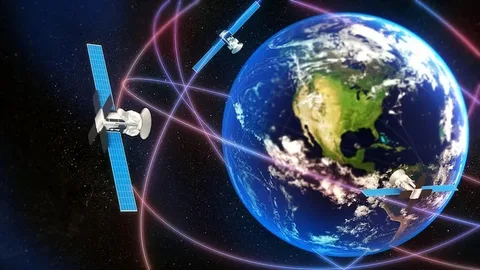In today’s interconnected world, the Global Navigation Satellite System (GNSS) plays a pivotal role in shaping how we navigate, communicate, and even conduct business. From satellites orbiting high above the Earth to the smartphones in our pockets, GNSS technology is seamlessly integrated into daily life, making it almost indispensable.
Understanding GNSS: The Backbone of Modern Navigation
GNSS is a constellation of satellites that transmit signals to receivers on the ground, enabling precise positioning and timing information anywhere on Earth. The most well-known system is the American GPS, but there are other global and regional systems such as Russia’s GLONASS, Europe’s Galileo, and China’s BeiDou. Together, these systems ensure global coverage and reliability.
How GNSS Powers Everyday Devices
When we talk about From Satellites to Smartphones: How GNSS Powers Everyday Life, it’s essential to understand the practical applications. Smartphones are perhaps the most visible example. The GPS chip inside your phone uses GNSS signals to pinpoint your location, guiding you through unfamiliar streets or helping you find the nearest coffee shop.
But the reach of GNSS extends far beyond personal navigation. Delivery services track packages in real-time, ride-sharing apps connect drivers and passengers efficiently, and emergency services use GNSS for faster response times. Even financial networks depend on GNSS for accurate time-stamping of transactions, ensuring security and precision.
The Broader Impact of GNSS on Industries and Society
The theme of From Satellites to Smartphones: How GNSS Powers Everyday Life also highlights its critical role in agriculture, aviation, maritime, and disaster management. Farmers use GNSS-based systems for precision farming, reducing waste and improving yields. Aircraft rely on GNSS for safe navigation, while ships use it to chart courses across vast oceans.
In natural disaster scenarios, GNSS helps coordinate rescue operations by providing accurate location data. It also plays a key role in environmental monitoring and infrastructure development, making it an essential tool for sustainable growth.
Looking Ahead: The Future of GNSS in Our Daily Lives
As technology advances, GNSS continues to evolve, promising even greater accuracy and integration. Innovations such as augmented reality, autonomous vehicles, and smart cities will rely heavily on GNSS to deliver seamless experiences and enhanced safety.
In conclusion, From Satellites to Smartphones: How GNSS Powers Everyday Life is more than a catchy phrase—it’s a reality that connects space technology to our everyday actions, making the world smarter, safer, and more efficient.


